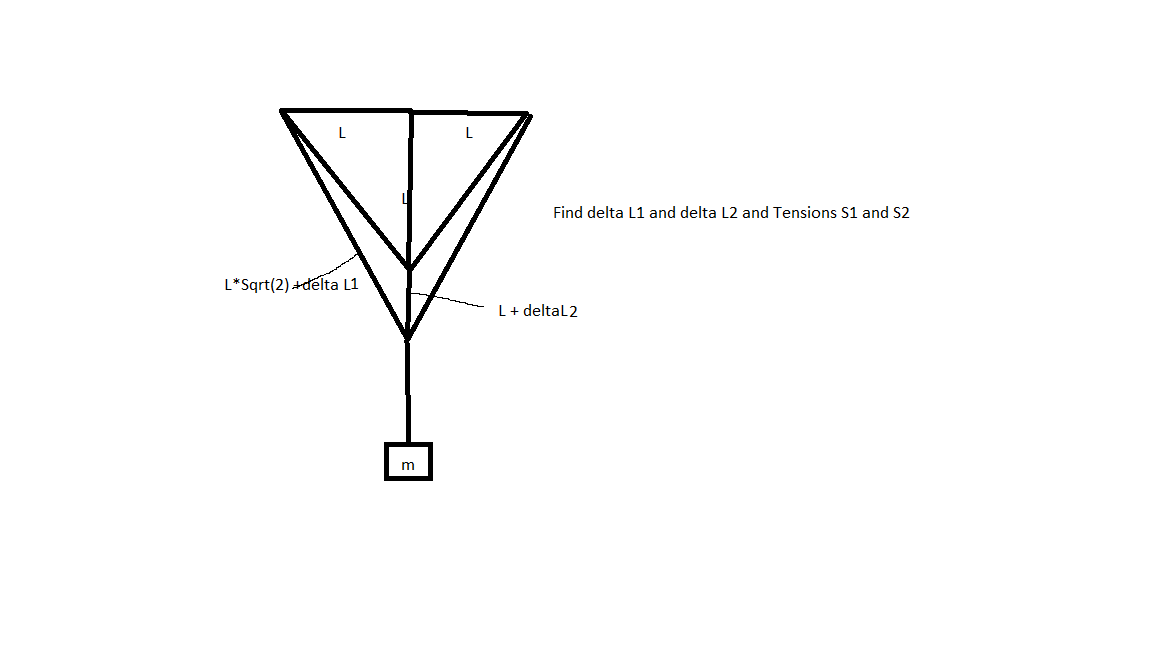 A mass m hangs on 3 ropes symmetrically with equal base angles.
The base angles are 45 degrees. So the middle rope Tension is vertical to the load mg. How can one find the delta l of the middle and the side rope? i know that the two side ropes will have the same load and therefore the same change in length.
A mass m hangs on 3 ropes symmetrically with equal base angles.
The base angles are 45 degrees. So the middle rope Tension is vertical to the load mg. How can one find the delta l of the middle and the side rope? i know that the two side ropes will have the same load and therefore the same change in length.
I did the sum of vertical forces and now end up staring at the question on how to move further to solve for tensions s1 and s2 also the change in lengths.
Also E and A are given for the calculation of delta l.
